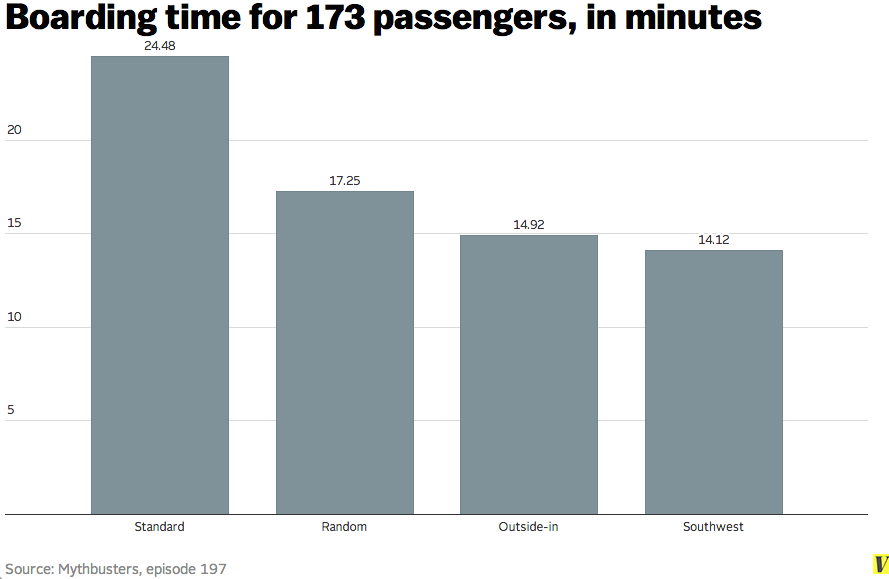In 2008, Steffen created a computer simulation to evaluate existing boarding methods and ultimately design what he claims is the most efficient option for getting restless passengers into their seats. The results were published several years ago in the Journal of Air Transport Management (summarized here).
In his research, Steffen identified the two most common factors responsible for slowing the boarding process to a painful crawl:
1. Passengers typically have to wait in the aisle for those ahead of them to stow luggage.
2. Those already seated in aisle or middle seats have to get up and move back into the aisle to let passengers behind them take the seats closer to the window.
In fact, the most routine boarding process -- from back to front -- is actually the slowest of them all, Steffen's argues, It's even less efficient than boarding a plane in a completely random order.
Steffen claims that his proposed method, which minimizes the former issue and eliminates the latter, could significantly reduce boarding times, thus cutting down on overall door-to-door flight lengths, and ultimately saving airlines hundreds of millions of dollars a year.
The news site Vox recently explored this question and created the above video analyzing various standard boarding methods. The videos below show individual simulations of these different boarding processes, listed from worst (slowest) to best (fastest).
Think you have a better idea? Let us know in the comment section below.
Here's to safe, relatively painless and highly efficient travels!
5. The dreaded back-to-front method
4. The random method
3. The outside-in method
2. The best current option: Southwest's self-selection method
No video simulation for this one, but the basic gist is that Southwest doesn't assign seats. Instead, passengers get on the plane in the order they check in and can sit in which ever seats are available. This method has proven to be the most efficient one currently used because passengers have more freedom to sit where they want and spend less time waiting in the aisle.
1. And finally, the winner (in theory, at least): The Steffen method
Steffen's method is closest to the the outside-in method, with one major difference: rather than having all window seat passengers board first, it creates a choreographed boarding sequence that eliminates any waiting in the aisle by having passengers board in a staggered format. Take a look:
